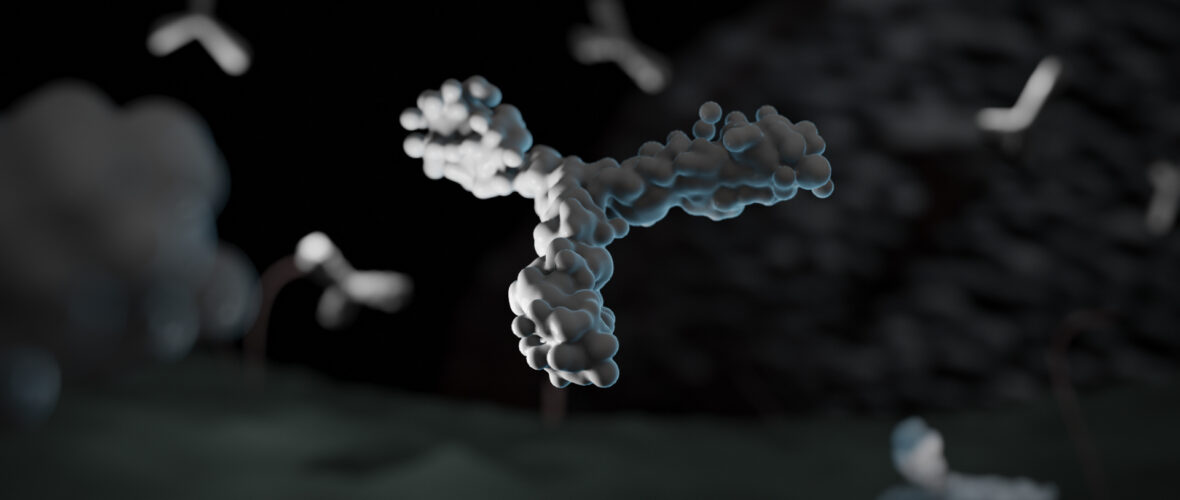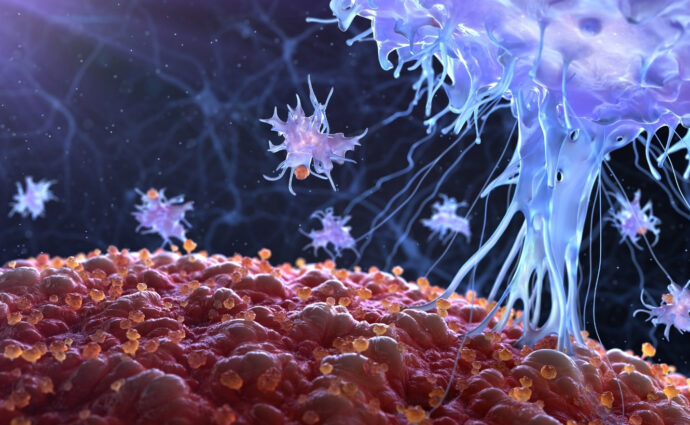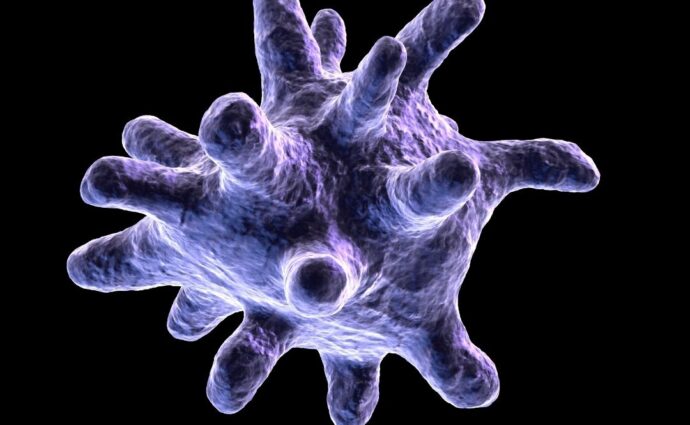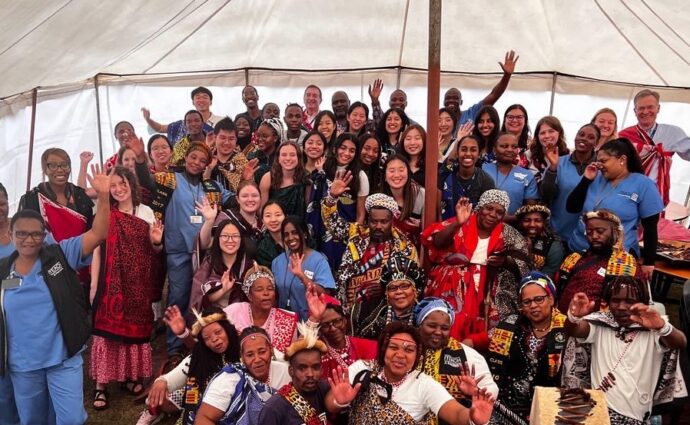Date: August 17, 2022 By: Emily Makowski

Key Takeaways
BOSTON – The human immune system is a library of responses to past exposures. In a new study published in Immunity, researchers from the Batista lab at the Ragon Institute of Mass General, MIT, and Harvard have clarified how one record of prior exposure, circulating antibodies, can change the response to vaccines.
Vaccines fight off pathogens by generating antibodies with a high affinity for binding to parts of the pathogen, or antigens. When the immune system is first exposed to a pathogen, B cells which bind reasonably well enter specialized structures, found in the spleen, lymph nodes, and parts of the gut, called germinal centers (GCs). There these B cells divide, undergo mutations in the receptors that bind antigens, and compete with one another until they differentiate into cellular factories capable of producing higher affinity antibodies.
In the new study, the team found that the antibodies circulating after the first vaccination in preclinical SARS-CoV and HIV mouse models affected which B cells were able to respond to a second vaccination. Circulating antibodies could either enhance or restrict the recruitment of specific B cell populations to GCs during secondary responses. “The role of pre-existing antibodies in shaping the immune response has been unappreciated, and it has major implications for vaccine design,” says Facundo Batista, PhD, associate director and chief scientific officer of the Ragon Institute and senior author of the paper.
Their approach used cutting-edge, humanized CRISPR/Cas9 mice designed for preclinical vaccine testing. Researchers took B cells from mice that had never been vaccinated and moved them into either unvaccinated controls or mice that had already been immunized for HIV through injection with an experimental nanoparticle, N332-GT2. They found that the circulating antibodies sharply impaired secondary recruitment of B cells to GCs. However, when the Batista lab repeated the process using preclinical models for SARS-CoV-1, the virus that caused the 2002–2004 SARS outbreak, and also models for SARS-CoV-2, the cause of our current pandemic, through immunization with a portion of the SARS-CoV-1 spike protein, they found the opposite result: primary antibodies improved the secondary recruitment of B cells.
The differences relate to the way antibodies bind to specific parts of pathogens and other foreign material. Experimental HIV vaccines use a strategy “to draw out pieces of the immune repertoire that would otherwise have a hard time responding because they recognize a very particular site on the virus that has a low likelihood of being targeted in a natural HIV infection,” says first author Jeroen Tas, PhD, now at Flagship Pioneering, who completed this research as a graduate student at the Ragon Institute. “What we see is that, indeed, we draw out a very strong response against this one particular site on the antigen with very high affinity.”
By contrast, in the SARS-CoV models, a range of sites are targeted by antibodies during the primary response. Electron microscopy of serum taken from the HIV mouse models, as well as from macaques vaccinated against SARS-CoV-2 and human patients naturally infected with SARS-CoV-2, provided a clear visualization of the very diverse binding of the SARS-CoV-2 antibodies in contrast to the very site-specific binding for antibodies in the HIV model, which might block new B cells from interacting with the antigen.
This has implications for vaccines that rely on multiple boosters. “Our findings here strongly suggest that even when a series of vaccinations by the same vaccine is effective, as with SARS-CoV-2, ultimately you may hit a point where the site is no longer available, and the response cannot improve further,” Batista says. The researchers suggest several ways this inhibition might be overcome, including altering the SARS-CoV-2 spike protein in a vaccine to make it more likely to stimulate the recruitment of new B cell clones into GCs.
This research was supported by the IAVI Neutralizing Antibody Center through the Collaboration for AIDS Vaccine Discovery grants OPP1084519, OPP1147787, INV-034657, OPP1196345, OPP1115782/INV-002916, OPP1170236/INV-004923 and INV009585, the Bill and Melinda Gates Foundation, the Collaboration for AIDS Vaccine Discovery, the National Institute of Allergy and Infectious Diseases (NIAID) UM1Al100663, UM1AI144462 and F30AI160908.
About the Ragon Institute
The Ragon Institute of Mass General, MIT, and Harvard was established in 2009 with a gift from the Phillip T. and Susan M. Ragon Foundation, with a collaborative scientific mission among these institutions to harness the immune system to combat and cure human diseases. Focusing on global infectious diseases, the Ragon Institute draws scientists, clinicians and engineers from diverse backgrounds and areas of expertise to study and understand the immune system with the goal of benefiting patients. For more information, visit www.ragoninstitute.org.
About the Massachusetts General Hospital
Massachusetts General Hospital, founded in 1811, is the original and largest teaching hospital of Harvard Medical School. The Mass General Research Institute conducts the largest hospital-based research program in the nation, with annual research operations of more than $1 billion and comprises more than 9,500 researchers working across more than 30 institutes, centers and departments. In August 2021, Mass General was named #5 in the U.S. News & World Report list of “America’s Best Hospitals.” MGH is a founding member of the Mass General Brigham health care system.
Media contact: Emily Makowski, 716-598-0027, emakowski@mgh.harvard.edu

Their findings, to be published in Cell next month, reveal how the virus manipulates immune system processes to avoid destruction by natural killer (NK) cells, a type of white blood cell that is crucial for fighting viral infections.

The lab of the Ragon Institute faculty member Hernandez Moura Silva, PhD, recently published a review in Science Immunology regarding resident tissue macrophages (RTMs), shedding light on their multifaceted roles in organ health.

After three years off due to the COVID-19 pandemic, the Ragon-MIT course HST.434 returned this January to provide 24 students a once in a lifetime learning experience